Haunted Heart: The Life and Times of Stephen King / Lisa Rogak
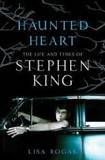 St. Martin’s Press / January 2009
St. Martin’s Press / January 2009
Reviewed by: Blu Gilliand
In writing Haunted Heart, an unauthorized biography of Stephen King, Lisa Rogak had a couple of major hurdles to clear. Whether or not she was successful in doing so is going to depend entirely on the reader’s familiarity with King prior to picking up this book.
As I understand it, the allure of the unauthorized biography is that they often share information that the subject has been reluctant to discuss, especially in our day of carefully manicured and polished public images. These are the places you go to get the kind of juicy behind-the-scenes dirt that helps magazines like People and websites like TMZ thrive. Rogak even comments on this in her introduction, where she writes: “The running joke among biographers is that if it is authorized, the book makes a good cure for insomnia.”
This idea may be true when the subject is someone like Oprah Winfrey, whose very existence depends on having total control over her public image, but in King’s case Rogak’s comment simply doesn’t fit. As both die-hard fans and casual readers are sure to know, King has always been extremely forthcoming about the personal demons that infuse his work and life. He’s talked in countless interviews about his years of substance abuse, his run-ins with obsessive fans, and his doubts and insecurities about the quality of his writing and the legacy he’s leaving behind. This is the man who, after all, once compared his contributions to literature as the equivalent of a Big Mac and fries. This is also the man who wrote On Writing, and it’s the “C.V.” section of that very book – King’s short but no-holds-barred memoir – that really serves to derail Rogak’s efforts.
You see, there’s precious little in Haunted Heart that King hasn’t already talked about or written about, whether it’s in On Writing or in the thousands of interviews he’s participated in over the years. So, Rogak’s first hurdle was in finding material that will be new to people. She may well have succeeded in this with casual readers of King’s work, but anyone who has moved beyond that description into full-blown fandom will know everything contained in her book already.
The second hurdle comes in re-telling (or re-writing) material already shared with us by one of the most talented and distinctive voices in writing. Rogak’s writing is not bad, but it is a bit workmanlike, without a lot of real personality or style. It almost reads like a book report instead of a book. When compared with King’s own autobiographical effort, which contains so much of the same material, it’s really no contest.
Haunted Heart is not awful, and it might even be revelatory for someone who’s only read a couple of King’s books and is curious as to what makes a guy write all that horror stuff. But for anyone who’s followed King’s career with anything approaching fandom, move along — there’s nothing to see here.
Purchase Haunted Heart by Lisa Rogak.
Ghosts of Manhattan / George Mann
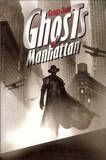 Pyr / April 2010
Pyr / April 2010
Reviewed by: I.E. Lester
This book can be summed up in nine words: Batman copy in a slightly altered 1920s New York (if you allow "1920s" as a single word in shorthand).
The Ghost – our superhero – is, like Batman, a normal man. He has no actual superpowers but rather relies on skill, cunning and an array of fancy gadgets to help him catch the bad guy. Even his alter ego, Gabriel Cross, is just a renamed Bruce Wayne hiding as he is behind his vain, trust fund playboy public image.
Having been re-imagined along steampunk lines by Mann, the New York of this novel is decidedly Gotham-flavored, darker than the 1920s-era city we’ve come to know. Technology is time-blended, with coal-powered automobiles and self-lighting cigarettes just some of the subtle technological differences.
History, too, has progressed down a very different route from a splitting point in Victorian times, resulting in a Cold War between the USA and a still-powerful Great Britain. To be honest, though, this is little more than window dressing on what is at heart a very derivative novel. No amount of tech tweaking or history rewriting is going to prevent the inevitable comparisons to the Batman mythos.
That said, Ghosts of Manhattan is by no means a bad read. In fact, for all its lack of originality, this actually reads quite well. George Mann has a very straightforward writing style. He writes devoid of flowery, inconsequential details and, as a result, the plot is very fast-paced and some of the action sequences – most notably a dogfight amongst the skyscrapers of Manhattan – can be very exciting to read.
His characters are engaging enough to make you care for them. Nightclub singer Celeste is a wonderful over-the-top gangster's moll figure, cast here in the role of Cross' main squeeze. British museum curator Arthur Wolfe, possibly the best of the supporting cast, serves in an almost Alfred-esque manner to Cross's Ghost, supplying him, and hence us, with vital information at a critical moment. Having Wolfe provide certain significant information to the Ghost allows nicely disguised moments of exposition, allowing the plot to unfold without seeming too obvious and without interrupting the flow of the novel.
There are elements of this book worth recommending, but this reviewer was ultimately left wanting more. If the author had included more detail of the differences in technology and alternate timelines this may have felt less like a Batman clone and more like the claim on the back cover: "The World's First Steampunk Superhero". Still, it wasn't a bad attempt.
Purchase Ghosts of Manhattan by George Mann
The Bridge / John Skipp and Craig Spector
 Leisure Books / May 2010
Leisure Books / May 2010
Reviewed by: Joan Turner
John Skipp and Craig Spector’s gripping apocalyptic novel, The Bridge, first released by Bantam in 1991, is just as unsettling and relevant today as it was then. It is a cautionary tale that pulls no punches, an entertaining and intelligent horror novel that makes a dynamic statement about the dangers of environmental pollution. Skipp and Spector created the splatterpunk movement, co-authoring seven novels before going their separate ways. The Bridge, in a class of its own, is quite possibly their finest effort. The theme strikes a chord with many readers and its message is impossible to ignore.
In Paradise, Pennsylvania, industry is courted to bring in jobs and revenue, and government and community leaders have no problem sweeping environmental regulations under the rug in the name of progress. Warner Blake, head of the Industrial Development Authority and Emergency Management Authority, is responsible for bringing industry into the county. Harold Leonard’s Paradise Waste Disposal company, the largest legitimate facility of its kind in the area, handles the chemical waste, but Harold has a problem. His company can handle only a fraction of it. He looks to Pusser’s Scrap & Salvage to dispose of the excess for him, and Otis Pusser is only too happy to make money on the side by illegally dumping the county’s waste products wherever he can.
Far down Toad Road, Black Bridge, a crumbling, abandoned railroad crossing, spans Codorus Creek, an illegal dumping site for the defense plants, research laboratories, factory farms, electroplate shops, paper mills and landfills. Codorus is teeming with hazardous chemicals. Late one night, Otis’s son, Boonie, and Boonie’s cousin Drew make their run to dump a truckload of barrels of toxic waste off the bridge, but tonight a storm is brewing both in the heavens and in the creek below. The world as they know it is about to change forever.
As Nature rebels against man’s destruction, the Overmind gains control, mutating living cells, bringing inanimate objects to life and regenerating the dead with the singular purpose of destroying earth’s human tormentors.
The Bridge is a riveting, fast-paced novel that is impossible to put down. The suspense builds toward the inevitable ending as likeable and all too human characters struggle against insurmountable odds. A crisis often brings out the best or worst in people, and The Bridge is no exception. Even in a catastrophe of this proportion, a few heroes exist, most notably the crew of the nuclear generating station who man their posts as the temperature continues to climb and Austin Deitz, an employee of Hazmat, the Hazardous Materials Squad. Changed but defiant, Deitz proves that even in death, love and a sense of justice survive.
The Bridge is comparable to Stephen King’s dramatic novel The Stand, but unlike The Stand, The Bridge offers only one inevitable conclusion for a society that refuses to heed the warnings, and it leaves the reader with a tremendous sense of loss.
This novel is a must-read. Powerful and well-written with unforgettable characters and a terrifying premise that will haunt your dreams, The Bridge is an uncompromising nightmare ride to destruction.
Purchase The Bridge by John Skipp and Craig Spector.
Red Sails / Edward M. Erdelac
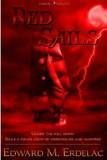 Lyrical Press / April 2010
Lyrical Press / April 2010
Reviewed by: I.E. Lester
Red Sails' short length is both its weakest feature and almost its saviour. Fifty-five pages just aren’t enough to really develop any of the various elements of the story — plot, location, backstory, characters, or mythos. As a result, none of these are even close to being fully fleshed out elements.
But to be totally honest, had Red Sails been any longer, you would start to notice the cracks where the plot has been cobbled together from a pick 'n' mix selection of recent blockbuster fantasy movies.
The basic concept of this book concerns an 18th Century British soldier named Janek Puzan (not the most British name this reviewer has ever come across) who has been captured and imprisoned aboard a Spanish Galleon called the La Dona Marisol. When the ship is attacked by pirates, he finds himself at the mercy of the pirate captain, a man who sees him as a perfect bit of sport for his men.
This Most Dangerous Game-style concept would seem a pretty reasonable – albeit recycled – plot for a book as short as this. Problem is that the proceedings instantly get a little more complicated. Pirate Captain Absolon Vigoreaux just happens to be a vampire and his ship crewed entirely by werewolves.
Janek, together with a Spanish priest, Timoteo, are put aground on a remote tropical island where they will serve as prey for the crew's hunt — a regular event the captain sets up to keep the crew's bestial natures satisfied.
On the island they meet up with an exotic primitive (and nearly naked) tribe to add a little titillation to the adrenaline-rush plot. Accompanied by a young woman, Janek and the priest set about defeating an entire pack of werewolves; or, to put it another way, one soldier and two non-fighters take on a pack of demonic bests. Sounds a fair fight.
This overloaded narrative results in a story that just doesn't hold up to much scrutiny. So is there anything at all to recommend in this book? Well, yes.
This is when Red Sails’ brief length becomes its greatest strength. At novella length, the pace moves so quickly you can barely pause for breath — never mind consider the preposterous nature of plot. In addition, Erdelac has a decent writing style. And although the concept here is overblown, he doesn't overdo it with the prose. His style is straightforward and unobtrusive.
He just tells a story without over-egging any aspect of it. The gore is presented in a very minimalist manner, just enough description to convince you of vampirism without overlabouring the point. Similarly, the savagery of the attacking werewolves is handled well. He's balanced detail with the reader's pre-existing knowledge of standard horror monsters, thus wisely allowing the reader to fill in the blanks.
Erdelac's bio gives his background as a filmmaker inspired by Errol Flynn movies. This is very apparent in Red Sails, which would make a far better action-adventure screenplay than a book.
Although Red Sails is not a great book, it does have some redeeming features. It's pure romp, throwaway Boys' Own-style adventure fun.
Purchase Red Sails by Edward M. Erdelac.
The Gray Zone / John R. Little
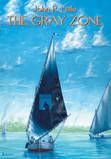 Bad Moon Books / September 2009
Bad Moon Books / September 2009
Reviewed by: Martel Sardina
Readers, you are in for a treat. And not just because John R. Little’s The Gray Zone is that good. (Though it is that good.) I am in the unique position of having read two incarnations of this tale. Today, you’re getting a review of a different sort. I’m going to share my comments from the first time I read this piece and now.
In January of 2009, I attended the Borderlands Press Novel Writing Boot Camp. For those unfamiliar with the Boot Camp experience, each participant in the novel section is required to submit: 1) a synopsis or outline of their novel, 2) a listing of major and secondary characters and their biographies, and 3) the first three chapters of the manuscript. The submission package is sent on to the other participants and the instructors, who will read and critique the stories. The participants and instructors meet in person to discuss the elements crucial to any good story namely: Character/Point of View, Plot/Setting, Grammar/Style, and Dialogue/Narrative Voice. And finally, each participant gives critiques to and receives critiques from the other participants.
When I first read The Gray Zone, it was called “Only Time.” The critique below is based on the synopsis/outline, character biographies and the sample chapters that John submitted to the Boot Camp.
Working Title: Only Time
Author: John R. Little
Rate the story in each of the following categories using 1 through 5 (5 being the best): Hook, Conflict, Characters, Setting/Mood, Pace/Style, Resolution, Grammar/Spelling and Overall Enjoyment.
These eight topics, worth five points each, are a good indicator of if a story is publishable or not. The higher the point total, the likelier the story can be sold. You can use this Crit Sheet for short stories and novels, published or pre-published. You can also give it to readers and ask them to rate your story.Low points in categories indicate what needs to be worked on in the rewrite. Don’t submit stories to agents or editors unless you have a score of at least 35. (Note: I came across this critique format/criteria in a writing class taught by J.A. Konrath. Reproduced with permission.)
The Hook - Does the story pull the reader in right away and then hold their interest?
Rating = 5
You had my interest from the get-go. The narrator has a distinct voice and I felt connected to him almost immediately. I wanted to know what was going to happen and was actually disappointed that I wouldn’t find out when I came to the end of the excerpt.
The Conflict - What is at stake in the story, and how is the tension used?
Rating = 4
You’ve got a lot going on here. I liked the scene where Achmed almost drowns. I think you described Henry’s effort to save him honestly. I sometimes wonder how people who have no medical training suddenly become rescue experts when the story needs them to be. You pulled this off without causing me not to believe that Henry was capable of saving Achmed.
When you jump to the first time Henry meets Cassie, I thought the transition worked well.**Spoiler Alert – Skip the section striked out below**
In reading the outline, I am a bit confused about the deaths of Henry’s mother, Alain, and Cassie. When you get to Part III – scene 11, you say that Henry realizes that the deaths are the consequences of his actions. With Henry’s mother, it is his inaction that led to her death. With Alain, I viewed that as an accident. How is Henry going to be able to relive his life and prevent that from happening? Or does acting to save his mother, change the course of his life so that Alain’s death never happens? I could see how Henry could view the deaths as being his fault. I just had a harder time classifying Alain’s death the same as the other two, so the thought process in scene 11 didn’t completely work for me. If you can tweak that so the mother’s death is the one that is the beginning of the downward spiral, I think it will make more sense when you get to this point.
The Characters - Are these compelling, real people whom the reader cares about?
Rating = 5
Yes. I think you have done a good job of fleshing the characters out and making them “real.”
Setting and Mood - Does the story make the reader feel like they are really there?
Rating = 5
The descriptions of Egypt at the beginning are believable. I’ve never been to Egypt so I don’t know if your descriptions are truly accurate, but I never doubted that your Egypt wasn’t the “real” Egypt.
Pace and Style - How well does the writer use the words to move the story along?
Rating = 4
I read a good number of thrillers, so in some ways, I expect everything I read to move along pretty quickly. It’s not a fair comparison since your story is obviously not in that genre, but I think things are unfolding as they should. I was definitely interested as I was reading despite the lack of action in some of the scenes. I think it is important for you to do the setup to ground the reader in Henry’s world before the time travel begins. Having the details of his life before Egypt, contrasted with his life in Egypt makes the dilemma more tangible once the time travel begins. Now we know what he’s lost and is trying to get back. Yes, the detail may hinder the pacing a bit, but I think as the plot unfolds the reader will not be disappointed by the payoff.
Resolution - Does it have a satisfying ending?
Rating = ??
Based on what I’ve seen so far, I don’t see any reason why you wouldn’t get a good mark here. But without seeing how things in their entirety, I’ll pass on rating the ending for now.
Grammar and Spelling - This must be perfect, no exceptions.
Rating = 5
Overall enjoyment - Was this a story you’d actually buy?
Rating = 5
Yes. I think that this is (by far) the best story in the boot camp. I can’t wait to see what you do with it going forward.
Total Score = 33 + ?? for the ending. I don’t think you will have any trouble selling this manuscript. It’s an original idea and I wish you the best of luck with it.
Since it’s not a secret that I loved this story then, I’m sure it will come as no surprise that I love what “Only Time” has become. The Gray Zone is a time travel story. It starts in Aswan, Egypt in 1984. Henry, a Canadian traveler, is nearing the end of his stay in Aswan. Henry is invited to join his host, Mohammed, and his son, Achmed, on a boat ride down the Nile. It is the first time Achmed has been asked by his father to steer the boat and Henry is honored to accept the invitation. The ride starts off pleasant but turns terrifying after an accident causes Achmed to fall into the river. Henry rescues the boy from drowning. As a thank you for saving Achmed’s life, Mohammed gives Henry a vial supposedly stolen from Ramses II’s tomb. The powder inside, once ingested, will give Henry the ability to travel in time.
Henry moves through time revisiting moments from his past, present and gains glimpses of his future. In the past, the memories are very clear. But as he moves forward and into the future, what he sees and experiences makes less sense, especially as he moves closer and closer to a time, he calls “The Gray Zone” which he assumes is close to the point of his eventual death.
That’s all I want to tell you about the plot of this piece. I hope I haven’t given away too much. In his introduction, James A. Moore wonders why more people aren’t reading John R. Little’s works. “For now, he (Little) is like a little secret. I hope that doesn’t last. Some secrets were never meant to be kept.” This reviewer, for one, hopes that you’ll read The Gray Zone and agree.
Purchase The Gray Zone by John R. Little.
Neverland / Douglas Clegg
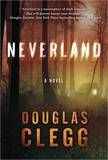 Vanguard Press / April 2010
Vanguard Press / April 2010
Reviewed By: Daniel R. Robichaud
One part coming of age story and one part atmospheric horror tale, Douglas Clegg's Neverland is one hell of a novel.
Georgia's Gull Island (rather a peninsula with an ambitious geographical name) is hot and humid, a home to flies and jellyfish, and possesses a bloody history. It is an isolated and generally lousy place to spend the summer. However, young Beauregard Jackson's parents are dragging him, his sisters, and infant brother for that very just purpose. Beau's maternal grandmother lives there, and summers offer time for a family reunion. Beau expects to be uncomfortable and annoyed. In addition to the humidity, the grown-ups tend to either drink or bicker (or both). Beau does not expect to discover the family's buried legacy or the darkness of growing up. However, over the novel he does, thanks to his weird cousin Sumter and the remote shack dubbed "Neverland". This is a place where no grown-ups are allowed, where imagination runs free. It is a site of dark miracles, and home to Sumter's god.
In time, Beau and his sisters become involved in Sumter's personal mythos. The four play at blasphemy by writing filthy messages on the walls and sacrificing "inconsequential" animals. Sumter plays high priest, communicating the tenets of a mysterious and monstrous divinity that speaks directly to him, while promising profound changes through a grand sacrifice to come. Worship begins as a game, but soon transforms into something deadly serious.
Originally published in 1991, Neverland was Douglas Clegg's third novel. The years have done little to reduce its effectiveness. Set in an indeterminate summertime between the 1960s and 1980s, the story fuses a rich atmosphere, supernatural born dread, and well drawn characters to create a rather uneasy coming of age story. The Vanguard Press edition is the novel's first trade paperback presentation. The story is accompanied by several eerily effective drawings by Glenn Chadbourne.
Narrator Beau's observations are conveyed with vivid-dream clarity. The voice Clegg adopts for him is touched with equal measures of wonder and regret. Most of the characters are well rounded; some secondary characters come across flat but they are nevertheless effective in their roles. This sensitive attention to personalities intensifies the book's many menacing sequences.
Neverland is something of a seed crystal to Clegg's subsequent novel, The Hour Before Dark, wherein another childhood game calls up a mysterious, malevolent presence. This is not to suggest The Hour Before Dark completely revisits or revises this earlier work. The two novels are thematically comparable yet individual. Still, readers familiar with Hour will find its themes and motifs evident, as well as a snippet or two of dialogue common to both sources (the phrase "I am the Daddy," is equally haunting in both novels). These two books reflect each other, tackling similar material from different viewpoints: in The Hour Before Dark, the haunting presence lingers until the characters reach adulthood, while Neverland tells the tale with a more innocent cast.
Innocent, however, means neither blameless nor stupid. The kids in this novel can be pretty nasty. They make plenty of poor choices. They share their parents' intolerances and failings, but they are also capable of strengths their parents can no longer achieve. In fact, the grown-ups in the story are the novel's least sympathetic characters, behaving childishly when they should know better. Their children instead struggle for a semblance of maturity and often fall short, finding themselves drawn into painful and fearful consequences beyond their understanding.
A strong awareness of horror fiction's history informs this novel. Subtle allusions to works by such authors as M. R. James or Algernon Blackwood pepper the text, adding depth and resonance. However, Neverland's final quarter includes a lengthy section directly tied to one of Arthur Machen's most famous pieces, which is a little disappointing. This section is less a reference than it is a recreation, which is metaficitonally intriguing yet tedious to those familiar with the source material. This particular tale has inspired big works from a host of horror writers – including Bentley Little, H.P. Lovecraft, and Peter Straub – because it's moving, inventive, and creepy. Inclusion makes sense with the world Clegg has created, but its introduction arrives with too heavy a hand.
Readers should also be wary that time's passage is fluid in this book, days blur with little notice. While this emulates the summer days of Bradburian youth, it also makes keeping track of the timeline sometimes difficult. Night falls fast, and days blend. The characters are all at dinner together, and then the children are in Neverland, and then they are back at dinner together. While it promotes the dream-like quality of the narrative, it can be disorienting.
In the end, Neverland's merits outweigh its difficulties. The novel achieves a disturbing otherworldliness and honest empathy. A bad book with good characters is still often a good read; Neverland is a nearly-great book with good characters and is a memorable experience.
Purchase Neverland by Douglas Clegg.
Joyride / Jack Ketchum
 Leisure Books / June 2010
Leisure Books / June 2010
Reviewed by: Joan Turner
Wayne Lock hadn’t killed anything in years, and even then it had only been one old dog and a few cats. But he wants to so much, even though he doesn’t dare. Not even during intercourse with his girlfriend, Susan, when he has his hands around her neck so tight she can’t breath, and the need to kill is an ache inside him, he still cannot do it, has to turn her loose, and he is so close he feels like a coward for not going through with it.
Angry, Susan leaves, and Wayne resumes his walk up the mountainside alone. He stops to glance over the ledge believing he can desensitize himself to the vertigo he has in this way. Below, he sees something that changes his life forever.
Howard Gardner abused his wife, Carole, physically, emotionally and sexually. Divorced, he continued to stalk her despite a restraining order. Carole and her new man, Lee, have tried everything to dissuade him, but to no avail. In desperation, they decide murder is the only answer.
On the lonely mountain trail, they carry out the deed, unaware that Wayne is watching from above and becoming more excited by the minute. They dare to do what he has only dreamed of doing, and he wants in on it, wants to know what it is like. He wants to ask them. He recognizes Carole’s lover, Lee, as a customer at the tavern where he works, and soon tracks them down. Kidnapping the couple, he begins a murderous road trip with Lee and Carole as his unwilling witnesses.
Counterbalancing the main plot of Wayne Lock and his nightmarish killing spree, the subplot is the story of the policeman, Rule, who knew Carole and Howard when they were married and had arrested Howard for abuse. Rule himself is not without internal conflicts. He is trying to reconcile himself to the breakup with his long-time girlfriend and is suffering from guilt because dedication to his job and putting work before family drove her away.
Joyride (a.k.a. Roadkill) was published in the U.K. in 1994, by the Berkley Publishing Group in 1995, and as a limited edition by Cemetery Dance Publications in 2008. The new Leisure paperback edition also includes the novella “Weed Species,” a terrifying tale of human depravity.
“Weed species,” Ketchum writes, “is an organism that successfully invades and disturbs natural ecosystems, displacing native species. The term is most often applied to, but not limited to, plants and may include kudzu, water hyacinth, zebra mussel, Burmese python, ecotourism and sociopath.”
Sherry and Owen are two twisted souls with a yen for sadistic sex. The story opens with Sherry’s Christmas gifts to Owen — her teenage sister’s virginity and a camcorder. Disaster happens and from there the plot becomes ever more brutal. One of the abused characters becomes an abuser as well perpetuating the cruelty.
Like Thomas Harris, Jack Ketchum often bases his psychological thrillers on true crime cases, probing the depths of human depravity and laying bare the workings of the sociopathic mind. According to his endnotes “On Writing Joyride,” he found his inspiration for this novel in Zola’s La Bete Humaine and in the lives of killers Howard Unruh and Thomas Eugene Braun whose exploits are detailed in Jay Robert Nash’s Bloodletters and Badmen. The latter also provided original source material for Ketchum’s sensational The Girl Next Door.
The plot of Joyride is relatively straightforward and uncomplicated, but it is a satisfying read nonetheless. “Weed Species” is a disturbing tale delivered in Ketchum’s violently graphic style. Both stories are fast moving and suspenseful with tight prose and well paced narrative action. Jack Ketchum is a master storyteller with keen insight into the dark side of the human psyche.
Purchase Joyride by Jack Ketchum.




